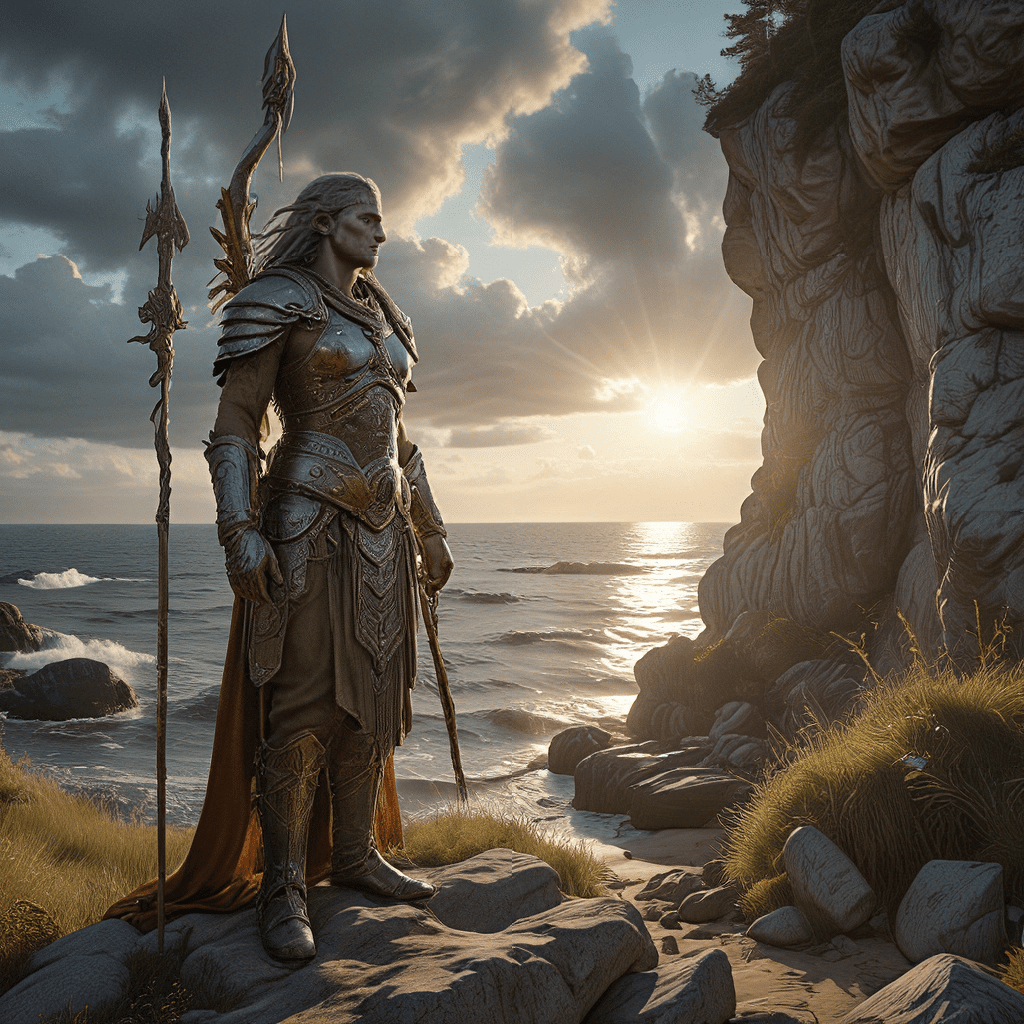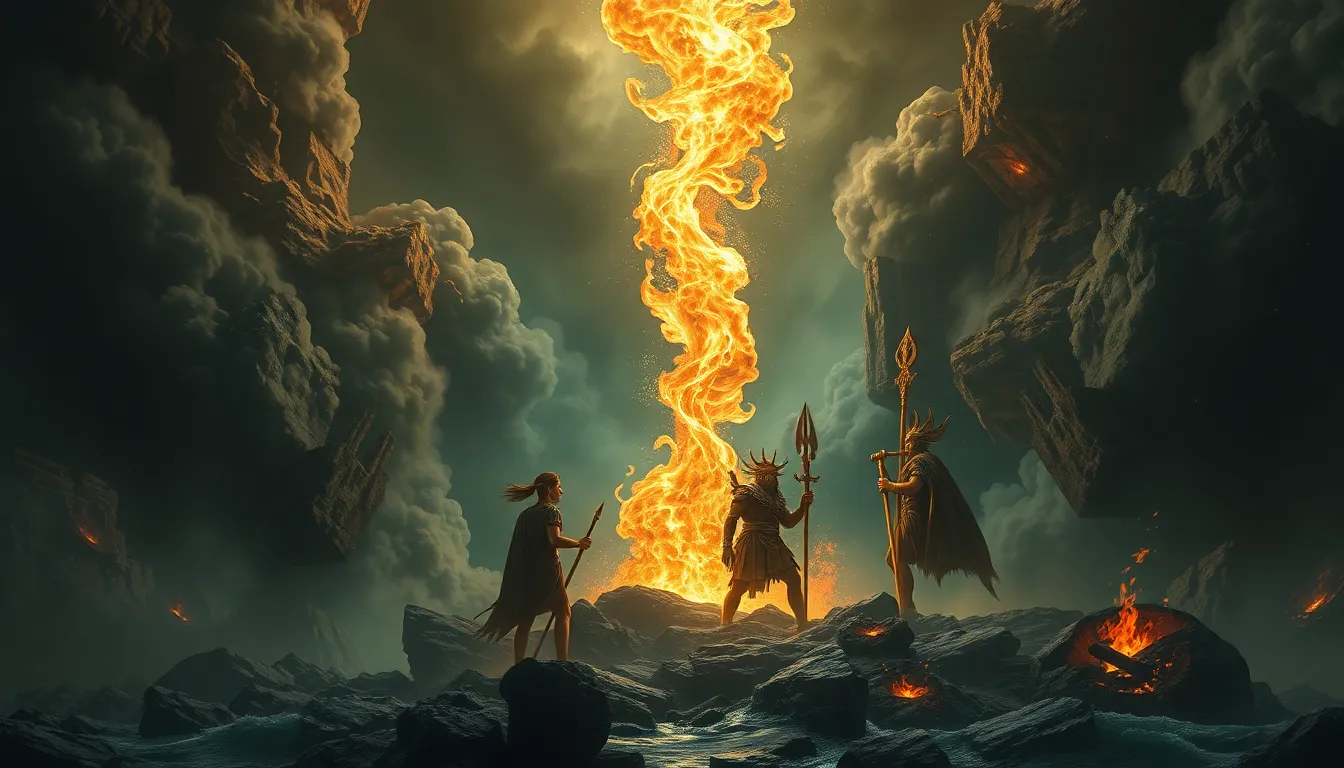Baltic Mythology: A Tapestry of Nature and Spirit
Baltic mythology, a rich tapestry woven from ancient beliefs, traditions, and stories, provides a fascinating glimpse into the worldviews of the people inhabiting the Baltic region in pre-Christian times. This fascinating system of beliefs, often intertwined with nature, encompasses a pantheon of deities, mythical beings, and spiritual forces that shape the landscape, influence human lives, and define the very essence of existence. Unlike other European mythologies, Baltic mythology focuses less on a structured hierarchy of gods and goddesses and more on the profound connection between humanity and the natural world, emphasizing the power and wisdom inherent in the Earth and its elements.
Guardians of the Sacred: Deities and Mythical Beings
In Baltic mythology, deities and mythical beings serve as protectors and guardians of the sacred sites and landscapes. Each entity embodies a specific aspect of nature or human experience, wielding influence over elements like the weather, forests, and seas.
Among the most prominent deities is Perkūnas, the thunder god, who symbolizes power, strength, and justice. He is often depicted wielding a hammer, controlling storms and lightning. Dievas, known as the sky god, represents the heavens and the divine order. Jūratė, the goddess of the sea, resides in the depths of the Baltic Sea, guarding its treasures and influencing the tides. Laima, the goddess of fate, guides the destinies of individuals, while Velnias, the embodiment of evil, tempts humans and represents the dark side of existence.
Mythical creatures like Laumės, benevolent spirits who bestow good fortune and protect homes, and Aitvarai, fiery serpents that guard treasures, further enrich the tapestry of Baltic beliefs. These entities, while often associated with specific locations, are also believed to inhabit the natural world, shaping the environment and influencing the lives of those who dwell within it.
The Sacred Grove: A Place of Power and Ritual
The sacred grove, often a dense forest or a collection of ancient trees, holds a central position in Baltic mythology. It represents a place of power, where the boundaries between the human and divine realms blur. The grove serves as a sanctuary for deities, mythical beings, and ancestors, making it a site of profound spiritual significance.
Within the sacred grove, rituals were conducted to honor deities, seek guidance from spirits, and commune with the forces of nature. Trees, particularly oaks, were considered sacred, often serving as focal points for rituals and offerings. The grove was also a place for divination, where individuals sought answers to their questions through the interpretation of natural signs and omens.
The Wellspring of Life: Water as a Source of Divine Energy
Water, in all its forms, plays a vital role in Baltic mythology, signifying life, fertility, and the flow of divine energy. Wells, springs, and rivers are often considered sacred sites, representing conduits to the underworld and sources of supernatural power.
These bodies of water are seen as the abode of water spirits and deities, who possess the power to heal, grant wishes, and influence the fate of individuals. The act of bathing in sacred waters is believed to purify the body and spirit, cleansing away negativity and restoring harmony.
The Oak Tree: Symbol of Strength and Wisdom
The oak tree, a dominant feature in Baltic landscapes, stands as a symbol of strength, resilience, and wisdom in Baltic mythology. Its longevity, powerful presence, and ability to withstand the harshest conditions make it a revered symbol of the divine.
Oaks are often associated with Perkūnas, the thunder god, who is said to reside in the strongest and oldest oaks. These trees are considered sacred, serving as places of worship, divination, and communication with the spiritual realm. The leaves, acorns, and branches of the oak were used in rituals and ceremonies, signifying protection, vitality, and the cyclical nature of life.
The Hills of the Gods: Sacred Sites and Burial Mounds
Throughout the Baltic region, hills and mounds stand as silent guardians of ancient times, holding a significant place in Baltic mythology. These elevated areas are often associated with the realm of the gods, serving as their dwelling places, meeting points, and burial grounds. The most prominent of these hills is known as "Kalnas," meaning "hill" in Lithuanian, often depicted as the home of "Dievas," the sky god.
These hills are not just physical features; they represent a connection to the past, serving as powerful reminders of the ancestors and the spirits who inhabit them. Burial mounds, often found on these hills, symbolize the journey of the soul into the afterlife.
The Land of the Dead: Navigating the Underworld
In Baltic mythology, the underworld, known as "Vėlių pasaulis," meaning "world of the spirits," is a shadowy realm where the souls of the departed reside. It's a place of both mystery and danger, where the spirits of the deceased continue to exist, influencing the lives of those still living.
The journey to the underworld is often depicted as a perilous journey across rivers and through forests, requiring the deceased to navigate treacherous paths and face challenges. The spirits of the ancestors, who act as guardians of the underworld, often guide souls on their way. There is a belief that the deceased are not only remembered but also have the power to influence the lives of their descendants.
From Myth to Ritual: Traditional Practices and Belief Systems
Baltic mythology was not simply a collection of stories; it was deeply intertwined with the daily lives of the people. This belief system shaped their rituals, social structures, and understanding of the world. Traditional practices, passed down through generations, reflected the reverence for nature, the respect for the spirits, and the belief in their influence.
Rituals focused on honoring the deities, seeking guidance from the spirits, and ensuring the fertility of the land. These practices included offerings, sacrifices, divination, and various ceremonies, often performed at sacred sites like groves, wells, and hills.
Tracing the Roots: Influences on Baltic Mythology
Baltic mythology, like many other mythologies, wasn't generated in isolation. It developed over centuries, influenced by neighboring cultures and incorporating elements from other belief systems. The Indo-European heritage, common to many European cultures, is evident in Baltic mythology, with shared themes of sky gods, thunder deities, and the importance of the natural world.
The proximity to the sea also contributed to the development of water deities, while influences from nearby Germanic tribes introduced folklore elements like the "Aitvarai" and other mythical creatures.
Interpreting the Past: Theories of Baltic Mythological Origins
The origins of Baltic mythology remain shrouded in mystery, sparking debate among scholars. One theory suggests that Baltic mythology arose from the animistic belief system common in many prehistoric societies, where spirits were believed to inhabit the natural world. Another theory points to the influence of Indo-European mythology, which shares common themes and deities.
The interpretation of ancient Baltic texts, archeological discoveries, and comparative studies are used to piece together the puzzle of Baltic mythology's origins. While a definitive answer may remain elusive, these explorations offer valuable insights into the cultural and spiritual world of the Baltic people.
FAQ
Q: What are the main deities in Baltic mythology?
A: Some of the most prominent deities include Perkūnas (thunder god), Dievas (sky god), Jūratė (goddess of the sea), Laima (goddess of fate) and Velnias (embodiment of evil).
Q: What role does nature play in Baltic mythology?
A: Nature is central to Baltic mythology. Many deities are associated with specific elements, animals, and landscapes. The natural world is seen as imbued with spirits and magical powers.
Q: What are some examples of sacred sites in Baltic mythology?
A: Sacred sites include groves, wells, springs, hills, and burial mounds. These places are believed to be inhabited by deities and spirits.
Q: What are some traditional practices in Baltic mythology?
A: Traditional practices include offerings, sacrifices, divination, and ceremonies conducted at sacred sites. These practices aimed to honor deities and seek guidance from spirits.
Q: What are some theories about the origins of Baltic mythology?
A: Theories about the origins of Baltic mythology include the animistic belief system, the influence of Indo-European mythology, and the impact of neighboring cultures.



